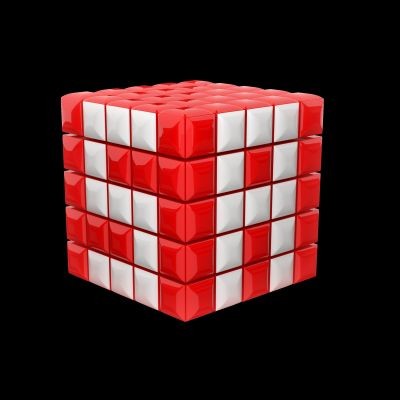Periodic Table Explained: Introduction
Follow us at https://www.facebook.com/AtomicSchool, https://www.instagram.com/AtomicSchools/ and https://twitter.com/atomicschools
Check out how the the Periodic Table is connected to Atomic Structure (protons, electrons and neutrons) at https://youtu.be/3_FJIpKgdV4.
Also check out how protons, electrons and neutrons were discovered at https://youtu.be/kBgIMRV895w.
Introduction video on the periodic table being explained to chemistry school & science students . The video explains how there are 92 naturally occurring elements, one for each kind of atom, and how they are arranged into a table according to their relative weights.
The expanded table is shown, and how this is abbreviated into the common Periodic Table. The division between metals, semi-metals and non-metals is discussed, with notable examples.
It also shows how the elements are arranged in rows and groups, the latter containing elements with similar properties, like members of a family.
Subscribe to watch more online chemistry courses & science videos:
http://www.youtube.com/channel..../UCiX8pAYWBppIbtUZTf
About Atomic School:
Atomic School supports the teaching of Atomic Theory to primary school & science students.
Our work has been verified by science education researchers at the University of Southern Queensland, Dr Jenny Donovan and Dr Carole Haeusler, who confirm that primary students are capable of learning much more complex scientific concepts than previously thought, and crucially, that they love it. Students run to class!
The program has been trialed in Australian schools as well as schools in the Philippines, Iran and India. It is conducted as holiday workshops at the Australian Nuclear Science and Technology Organisation, the Queensland Museum as well as the World Science Festival.
It has attracted wide media interest, including TV, radio and print, and the research data has been presented at prestigious American Education Research Association and Australian Science Education Research Association conferences.
Atomic Theory underlies all the other sciences- genetics, electronics, nanotechnology, engineering and astronomy- so an early understanding will set them up for a more successful learning sequence for all their science subjects, and support their mastery of mathematics as well. We also have extension programs that cover Biology, Physics and Astronomy to an equal depth.
About Ian Stuart (Email: ian.douglas.stuart@gmail.com):
The founder of Atomic School, Ian Stuart, taught Chemistry and Physics for 25 years at senior levels before he realized that his 8-year old son, Tom, could understand Atomic Theory at a much deeper level than he expected.
Ian then developed a program to teach the advanced concepts of high school Chemistry, Physics and Biology to students 10 years younger than they normally would. He found that this engaged their interest in modern science early, and sustained it through to high school and beyond. It also sets them up for future success in their academic and career paths.
Ian has a Bachelor's Degree in Chemistry from the University of Queensland and a Master's degree in Electrochemistry from the University of Melbourne.
Connect with Atomic School on social media:
http://facebook.com/AtomicSchool
http://twitter.com/AtomicSchools
http://instagram.com/AtomicSchools
Video transcript:
In the first video we saw that all the things in the world are made of incredibly tiny particles called atoms. And also that there are 92 different kinds of them. Most things have more than one type of atom in them, but when we do find something containing just one kind of atom, we call it an element. A nugget of gold is an element because it's made of only gold atoms.
The atoms are too small to see with our eyes, even using a good microscope, but if we could zoom in with a magnification of a billion times we could see the individual gold atoms. Each kind of atom had a shorthand way of writing it, called its symbol, using either one or two letters. The symbol for gold is Au, taken from the ancient Latin word it, aurum. The symbol Au could refer to either a single gold atom, or the element gold consisting of many gold atoms.
Scientists have made a list of all the types of atoms, starting with the lightest, hydrogen, followed by the next lightest, helium. Just heavier than these are lithium and beryllium. We could give each element a number showing its place in this list. Hydrogen's number would be 1 as it is the first in the list, helium's would be 2, and so on. Here are the first 20 elements in the list, starting with the lightest, hydrogen, and going all the way to the heaviest, uranium. Since there are 92 elements in the list, uranium's number must be 92





















